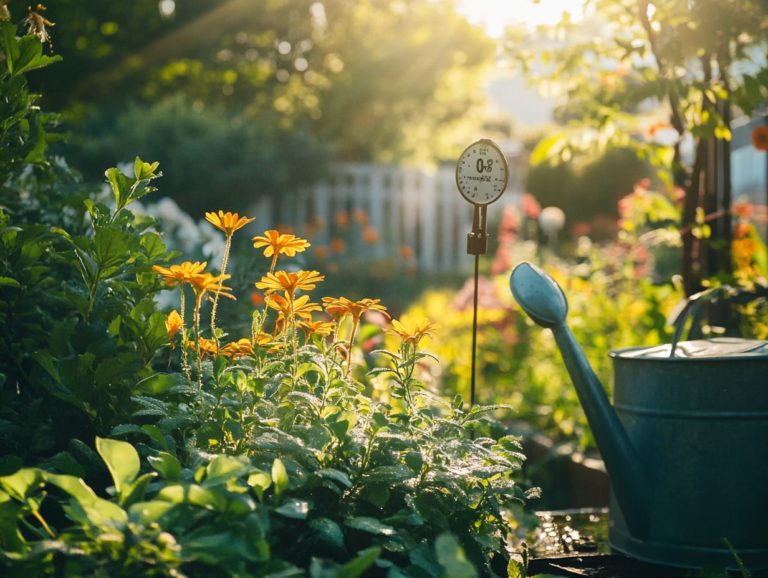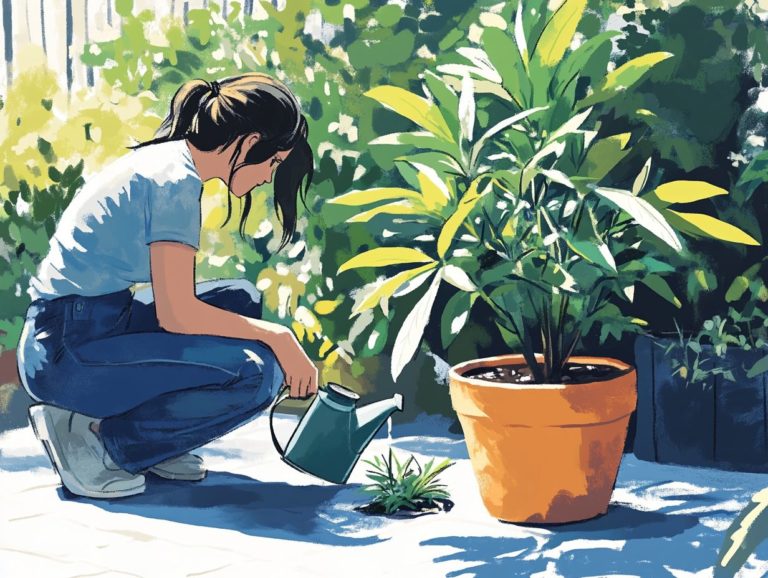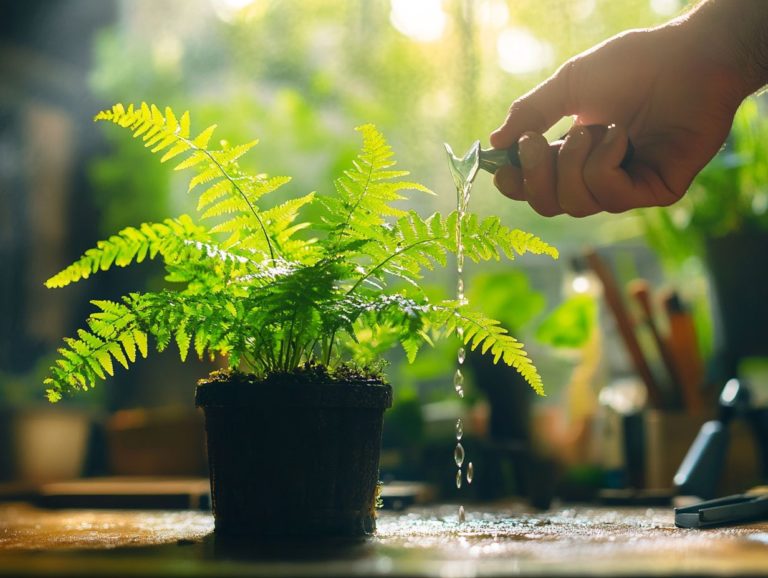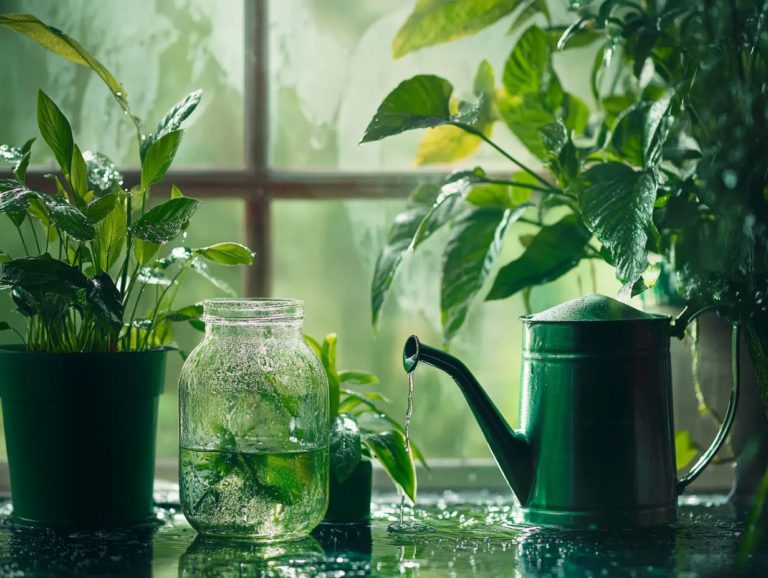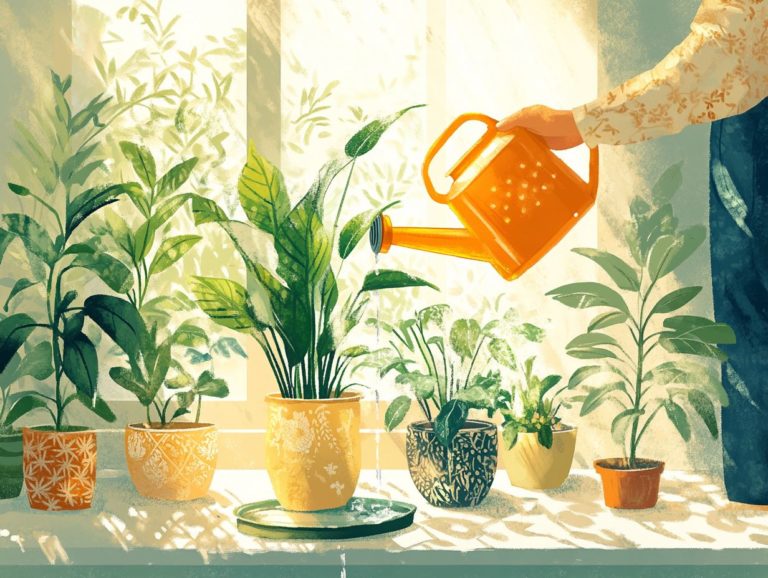How to Use Moisture Meters for Plants
Understanding moisture levels is essential for maintaining the health of your plants, whether they reside indoors or outdoors.
Moisture meters are your secret weapon for perfect plant hydration! They enable precise assessment of soil hydration and empower you to make informed watering decisions.
This article delves into various types of moisture meters. We highlight their benefits and guide you on how to use them effectively for both your indoor and outdoor plants.
You’ll also discover tips for maintaining these instruments, ensuring they remain accurate for the long haul. Join us as we explore the pivotal role moisture meters play in achieving gardening success.
Contents
- Key Takeaways:
- What are Moisture Meters and Why Use Them?
- Types of Moisture Meters
- Using a Moisture Meter for Indoor Plants
- Using a Moisture Meter for Outdoor Plants
- Benefits of Using a Moisture Meter
- Maintenance and Care of Your Moisture Meter for Optimal Performance
- Frequently Asked Questions
- What exactly is a moisture meter, and why should every plant parent have one?
- How do I use a moisture meter for my plants?
- Can I use a moisture meter for all types of plants?
- How often should I use a moisture meter for my plants?
- How do I properly calibrate my moisture meter?
- Are there any other benefits to using a moisture meter for plants?
Key Takeaways:
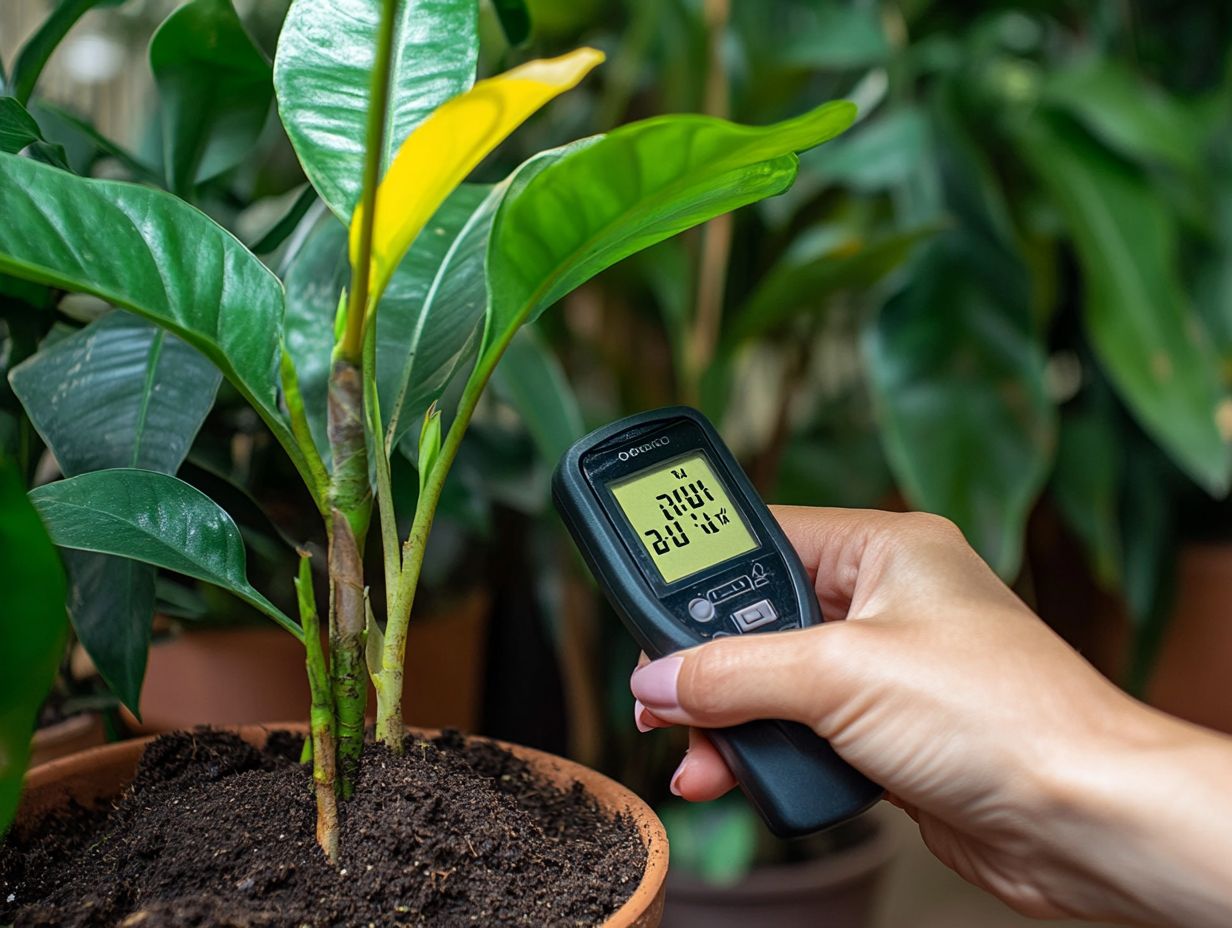
- Ensure accurate readings by properly placing and interpreting moisture meter readings on both indoor and outdoor plants.
- Pick the perfect moisture meter to suit your needs, whether it’s analog vs. digital or single vs. multiple probe meters.
- Maintain and care for your moisture meter to ensure longevity and accuracy, providing efficiency and health benefits for your plants.
What are Moisture Meters and Why Use Them?
Moisture meters are critical tools for any plant enthusiast. They allow you to accurately assess the soil moisture levels in your indoor garden, ensuring your houseplants receive just the right amount of water they need to thrive.
By using electricity to measure moisture or inserting a probe into the soil, these devices offer invaluable insights into the moisture conditions of your soil. This helps you avoid common pitfalls like overwatering or underwatering that can threaten plant health and survival.
Mastering the use of a moisture meter can elevate your gardening experience. It fosters the healthy growth of a variety of plants, including those that crave moisture, such as the African milk tree and candelabra cactus.
Types of Moisture Meters
Moisture meters come in a range of types, each providing distinct advantages for plant care. You ll find both analog and digital options, along with single and multiple probe configurations.
Understanding the differences between these types enables you to select the gardening tool that best meets your specific requirements. Whether you’re nurturing indoor gardens or tending to larger outdoor plants, choosing the right meter is crucial.
Analog vs. Digital Meters
There are two primary types of moisture meters: analog and digital. Each offers distinct methods for measuring soil moisture levels with varying degrees of accuracy.
Analog meters typically use a straightforward needle gauge to indicate moisture levels. However, their readings can be influenced by factors like soil composition and temperature.
Digital moisture meters use electronic sensors, providing you with more precise measurements. This can help you determine the perfect watering schedule for your plants.
While analog options might be more budget-friendly and user-friendly, they often lack the nuanced readings necessary for delicate plant types, such as succulents or orchids. Conversely, digital meters can handle moisture readings across a broader range of conditions but may come with a higher price tag.
Understanding how these tools function and accurately interpreting their results is essential for maintaining the health of your plants, especially when managing thirsty varieties like ferns or drought-resistant ones like lavenders. A solid gardening tip? Regularly check your soil moisture and adjust your watering practices to ensure optimal growth.
Single vs. Multiple Probe Meters
Single probe meters and multiple probe meters each have their unique roles in assessing moisture levels. The latter offers a more comprehensive analysis of soil conditions across various watering zones.
Understanding the differences between these two types can elevate your approach to plant care and garden maintenance. Single probe meters are perfect for measuring moisture in a specific location, making them ideal for quick checks on individual plants or small areas.
On the other hand, multiple probe meters provide a more thorough evaluation by collecting data from different depths and areas. This is especially advantageous for larger gardens or landscapes where moisture levels can vary significantly.
When managing a diverse array of plants or expansive plots, opting for multiple probe meters can yield deeper insights, giving you the power to make informed watering decisions. For simpler scenarios, like potted plants or small flower beds, a single probe meter often does the job, offering ease of use and convenience.
Using a Moisture Meter for Indoor Plants
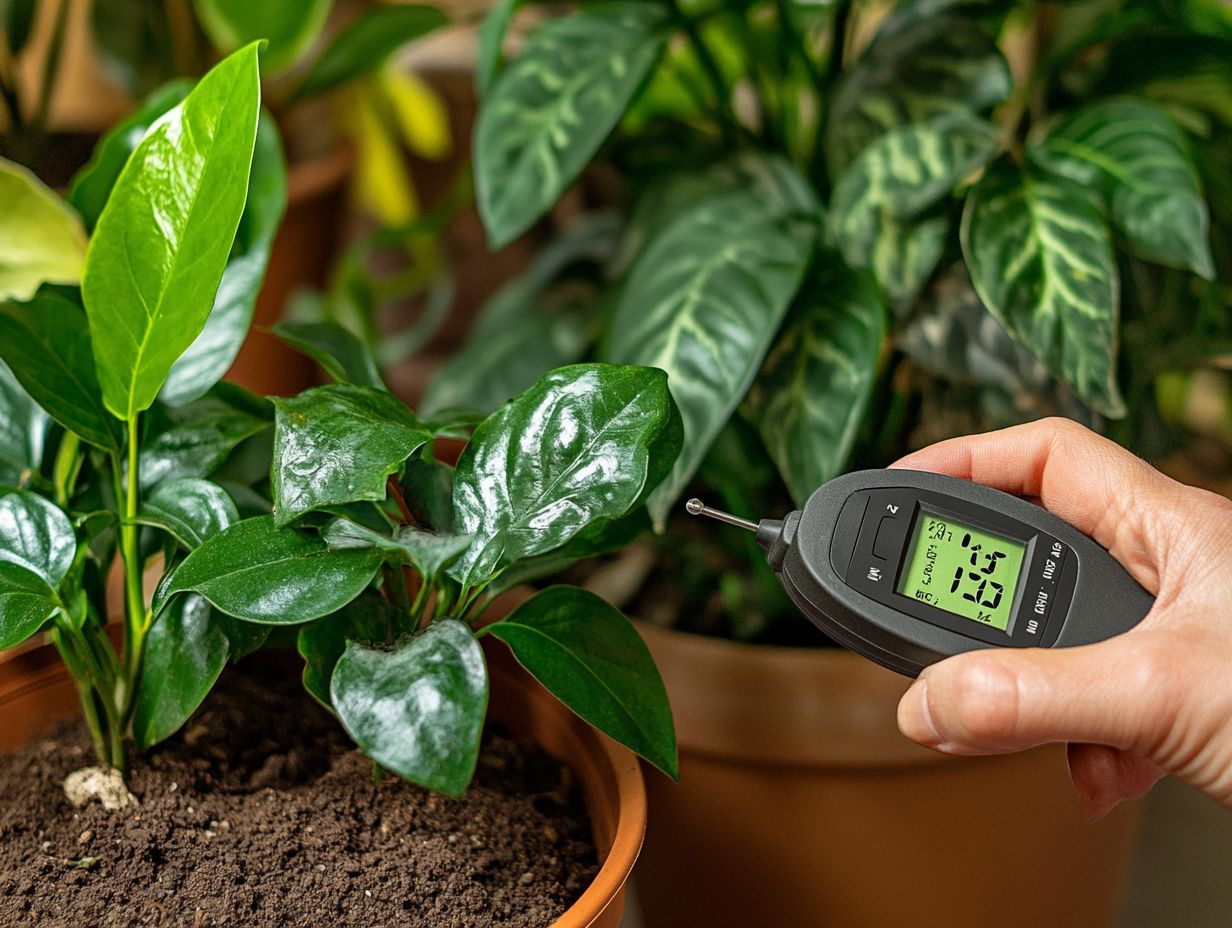
Utilizing a moisture meter for your indoor plants can significantly improve your ability to maintain the best soil conditions. Proper probe placement and accurate reading interpretation are crucial for effective plant care.
By thoughtfully inserting the probe into the soil and regularly checking moisture levels, you can customize your watering routine to meet the specific needs of each houseplant, ensuring they thrive in their environment.
Proper Placement and Reading Interpretation
Getting the probe placement just right is key to happy plants! By inserting it at the right depth in the soil, you gain clearer insights into moisture levels and the specific needs of your plants.
When you position the probe correctly typically within the root zone (the area where plant roots grow and absorb water) it ensures that the readings truly reflect the moisture levels where your plant can absorb water most effectively. This depth will vary based on the type of plant and its root structure, so knowing exactly how far to insert the probe can significantly enhance its effectiveness.
A moisture meter reading that falls within the ideal range indicates your plant is adequately hydrated. Conversely, if the numbers are too high or too low, it’s a clear signal that adjustments to your watering schedule are necessary. By making these assessments, you can maintain optimal moisture levels and learn how to use a watering gauge for indoor plants, which directly influences the health and growth of your plants.
Using a Moisture Meter for Outdoor Plants
When utilizing a moisture meter for your outdoor plants, consider several key factors to ensure accurate readings.
Pay attention to soil drainage, as this can significantly affect moisture levels. Consider the environmental light conditions, which can influence both evaporation and moisture retention.
Lastly, be mindful of the specific types of plants you are cultivating, as different species may have varying moisture requirements.
Factors to Consider for Accurate Readings in Plant Care
To obtain accurate readings from a moisture meter for your outdoor plants, you must consider factors affecting soil and light conditions, as these ultimately influence moisture levels.
The type of soil is paramount; sandy soils drain quickly and often require more frequent watering, while clay soils retain moisture for longer periods. Proper drainage is essential overly soggy conditions can lead to root rot, whereas well-drained soil is a boon for moisture-loving plants.
Sunlight exposure also plays a crucial role in moisture retention; areas basking in full sun may dry out more quickly than their shaded counterparts.
For instance, the African milk tree thrives in moderately moist conditions but demands well-drained soil, while the candelabra cactus is perfectly content with drier spells. Their care routines hinge on moisture meter readings; the milk tree requires consistent checks to stave off drought stress, while the cactus can comfortably tolerate lower moisture levels.
Start using a moisture meter today to ensure your plants flourish!
Benefits of Using a Moisture Meter
The advantages of using a moisture meter are significant, especially when it comes to enhancing plant health and optimizing watering practices.
With precise readings, you can effectively prevent both overwatering and underwatering, ensuring your plants receive just the right amount of hydration they need to thrive.
Efficiency and Plant Health Benefits
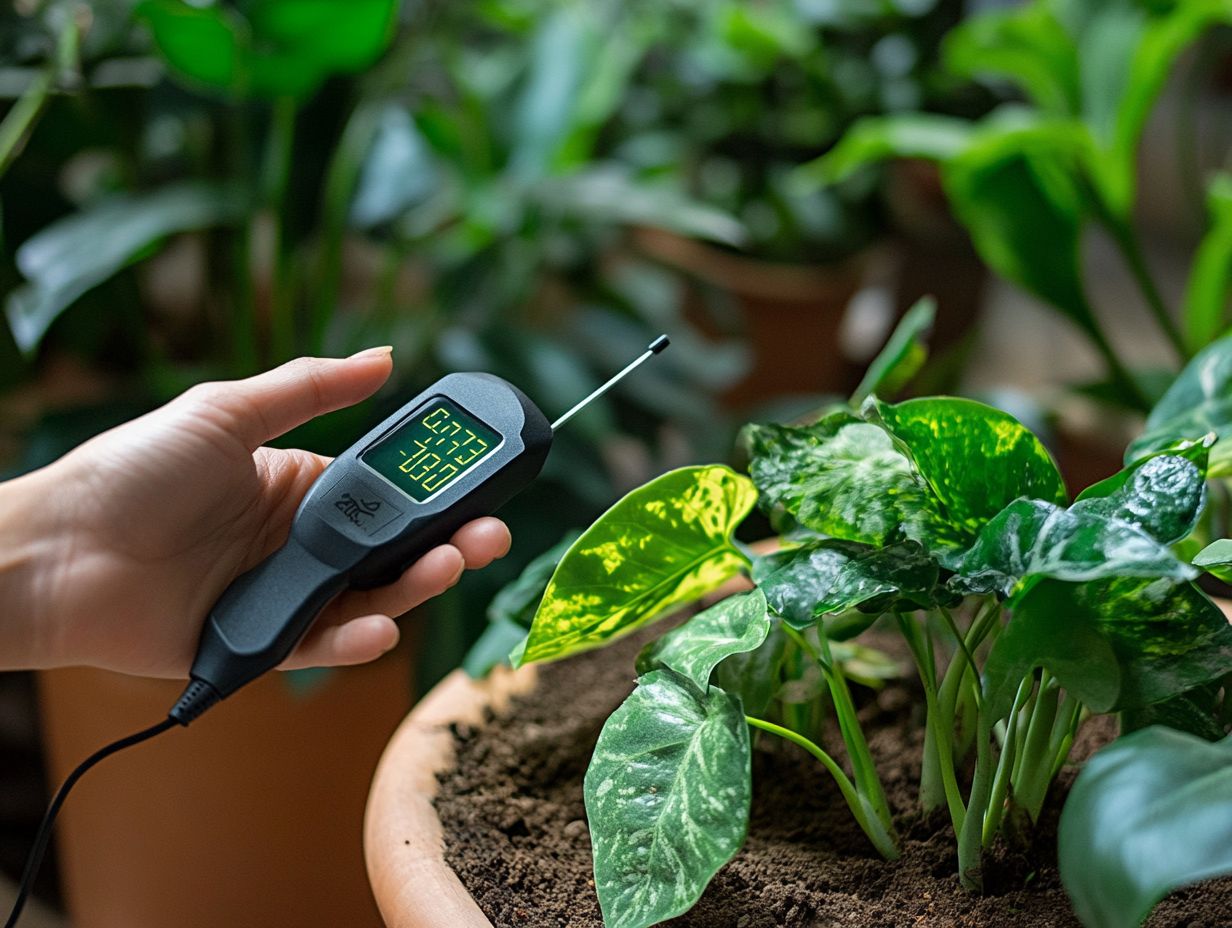
Utilizing a moisture meter significantly enhances your plants’ health by fostering efficient watering practices tailored to the specific needs of various plant types.
This remarkable device lets you accurately gauge soil moisture levels. It helps you avoid the pitfalls of overwatering and underwatering, both of which can lead to root rot or dehydration.
For instance, succulents, celebrated for their drought-resistant nature, flourish when you water them only after the soil has thoroughly dried out. In contrast, tropical plants like ferns thrive on consistent moisture, making it crucial for you to check their hydration levels regularly with a moisture meter.
By routinely monitoring your plants, you ensure that each one receives the precise amount of water it craves, ultimately resulting in lush foliage, vibrant blooms, and overall vitality.
Maintenance and Care of Your Moisture Meter for Optimal Performance
Taking good care of your moisture meter is key to keeping it reliable! Regular maintenance and care are essential for ensuring their longevity and delivering accurate readings. This enables you to monitor your plants effectively and cultivate a thriving green environment.
Tips for Longevity and Accuracy
- Proper cleaning: Gently wipe down the probe with a soft, damp cloth and avoid any harsh chemicals.
- Regular maintenance routines: Regularly check for dirt or mineral buildup to prevent damage and guarantee accurate readings.
- Adjusting the device: Establish a routine for adjusting the device at specific intervals to enhance its lifespan.
- Storage: Store the meter in a protective case, away from extreme temperatures or humidity, to maintain its integrity.
By adhering to these best practices, you ll enjoy reliable moisture readings, ultimately supporting the health and vitality of your plants.
Frequently Asked Questions
What exactly is a moisture meter, and why should every plant parent have one?
A moisture meter is a tool used to measure the amount of moisture in the soil. It is important for plants because it helps you determine whether your plants are getting enough water or if they are being over or under-watered.
How do I use a moisture meter for my plants?
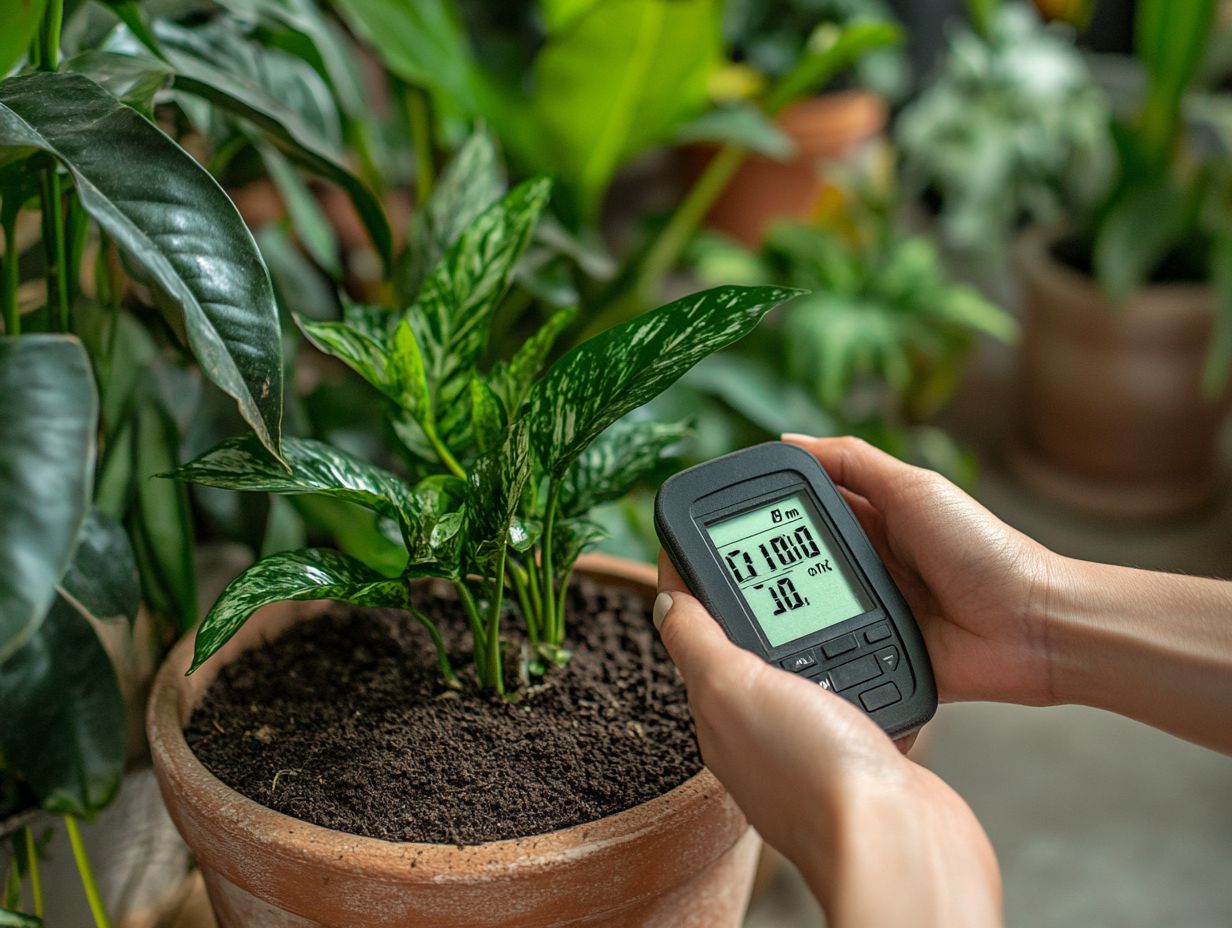
To use a moisture meter for your plants, first insert the probe into the soil near the plant’s root system. The meter will display a reading, indicating the moisture level. If the reading is low, it means the soil is dry, and the plant needs to be watered. If the reading is high, it means the soil is too wet, and the plant may need less water.
Can I use a moisture meter for all types of plants?
Yes, you can use a moisture meter for all types of plants. However, keep in mind that some plants may have different ideal moisture levels, so it is important to do some research on your specific plant’s needs.
How often should I use a moisture meter for my plants?
This will depend on the type of plant and its individual needs. For some plants, checking the moisture level once a week may be sufficient, while others may require more frequent checking. It is important to monitor your plants regularly and adjust watering accordingly.
Don t wait until it s too late to check your plants moisture levels! Start using a moisture meter today and watch your plants thrive like never before!
How do I properly calibrate my moisture meter?
To calibrate your moisture meter, start by inserting the probe into a cup of distilled water. Ensure the probe does not touch the cup’s sides or bottom.
The meter should read 0. If it doesn’t, adjust the calibration knob until it does.
Next, place the probe in a cup of dry soil. It should read 10. If not, make further adjustments with the knob.
Your moisture meter is now calibrated and ready for use!
Are there any other benefits to using a moisture meter for plants?
Yes, a moisture meter can help prevent over-watering and under-watering. This is important since both can stress your plants and lead to disease.
Using this tool can also save you water and money. You’ll only water your plants when they truly need it!

